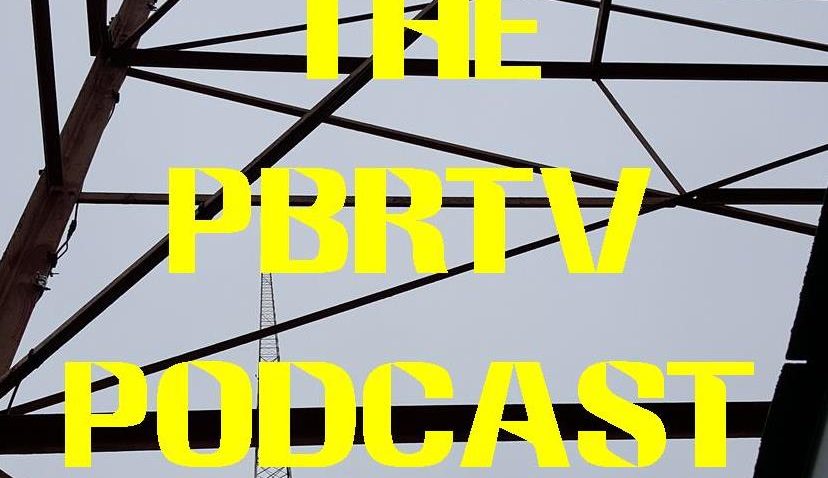Happy Hanna-Barbera Day (observed)
December 17, 2007Hanna started out as a cartoonist, while Barbera was an artist and screenwriter. The pair met and began working together at Metro-Goldwyn-Mayer, where they produced cartoons for theatrical release, most notably “Tom & Jerry.” Their first MGM “Tom & Jerry” short, “Puss Gets The Boot,” debuted in movie theaters back in 1940.
The rapid spread of television sent the movie business into a tailspin in the mid-1950s, and the studios were soon dumping their production of “short subjects” like newsreels and cartoons. When MGM closed its animation unit in 1957, Hanna and Barbera began producing cartoons directly for television. (They had already been running a small company called “H-B Enterprises” that produced advertisements and industrial films.)
Because TV screens were much smaller than movie screens, the pair could use money-saving shortcuts, like reusing backgrounds and limiting the amount of animation.
 The dog-and-cat team of “Ruff and Reddy” debuted at 10:30 a.m. Saturday, Dec. 14, 1957 on NBC affiliates nationwide, including Pittsburgh’s brand-new WIIC-TV (11), Johnstown’s WJAC-TV (6), Youngstown’s WFMJ-TV (21) and Wheeling’s WTRF-TV (7). (CBS was featuring “Mighty Mouse” in that timeslot.)
The dog-and-cat team of “Ruff and Reddy” debuted at 10:30 a.m. Saturday, Dec. 14, 1957 on NBC affiliates nationwide, including Pittsburgh’s brand-new WIIC-TV (11), Johnstown’s WJAC-TV (6), Youngstown’s WFMJ-TV (21) and Wheeling’s WTRF-TV (7). (CBS was featuring “Mighty Mouse” in that timeslot.)
At first shown in glorious black-and-white, the 30-minute series included puppetry and some Columbia Pictures cartoons to fill out the half-hour. The show would switch to “living color” in 1959.
Daws Butler, a prolific voice actor best remembered for other cartoon voices like those Yogi Bear and Huckleberry Hound, played the dog (“Ruff”), while Don Messick (who later played Scooby-Doo, among other Hanna-Barbera characters) was the cat, “Reddy.” Announcer Jimmy Blaine, who also appeared on Paul Winchell’s show, served as emcee of “Ruff and Reddy.”
Evanier admits that “Ruff and Reddy” wasn’t a great show, noting “the animation looks primitive even by Hanna-Barbera standards” and “the narrative seems a bit leaden”:
Still, the show had intriguing stories and colorful characters, as well as the expert voice work of Daws Butler and Don Messick, and I wasn’t the only kid hooked from the start …
I was five and a half years old at the time but already, I had a lot of the constantly-repeating “Bugs Bunny” and “Heckle & Jeckle” cartoons committed to memory. Ruff the Cat and Reddy the Dog were new friends, so appealing that I didn’t notice that they didn’t move as smoothly or as much as other animated superstars. Or if I did, I didn’t care.
The following October, Bill and Joe introduced their second show, which was even better and all-cartoon … “Huckleberry Hound.” Before long, they were the kings of Childrens’ Television.
Evanier notes that Hanna-Barbera cartoons tend to produce “two distinct reactions.” People who came of age in the late 1970s often dislike the cheap-looking animation and repetitive, simplistic storytelling that characterized the studio’s output in those years. Others, however, credit Hanna and Barbera for salvaging the animation industry when the studios had left it for dead.
 “There’s some truth to all of that,” Evanier says, “but it’s especially positive to those of us who remember those early Hanna-Barbera shows and discovered them when they first debuted … starting with ‘Ruff and Reddy.'”
“There’s some truth to all of that,” Evanier says, “but it’s especially positive to those of us who remember those early Hanna-Barbera shows and discovered them when they first debuted … starting with ‘Ruff and Reddy.'”
“Ruff and Reddy” was canceled in 1960 (our check of Pittsburgh and Wheeling TV listings indicates it was gone by May). According to an article at TV Party, it returned to NBC’s Saturday morning lineup in 1962 with a new host (“Captain Bob” Cottle of Boston’s WHDH-TV) and ran for a few more years.
In 1967, Cincinnati’s Taft Broadcasting (which briefly owned Pittsburgh’s KQV) purchased Hanna-Barbera. The company was sold again in 1990 to Turner Broadcasting and was eventually merged entirely into Warner Bros. Animation and Cartoon Network.
“Ruff and Reddy” cartoons haven’t been televised since brief runs on USA Network in the 1980s and Cartoon Network in the 1990s, and aren’t available on DVD. But with most other Hanna-Barbera shows now available on home video, hopefully we haven’t seen the last of Ruff, Reddy and their friends.
Here’s the opening, with a big tip of the PBRTV propeller-hat to Mark Evanier, whose website is well worth a visit:
Rarely does “MMNF” get a ready-made feature, but we’ve got one this week, thanks to Los Angeles-based comedy writer and comics-animation historian Mark Evanier.
 On Saturday, over at his daily journal News From Me, Evanier noted the 50th anniversary of the debut of “Ruff and Reddy,” the first cartoon produced for television by Bill Hanna and Joe Barbera.
On Saturday, over at his daily journal News From Me, Evanier noted the 50th anniversary of the debut of “Ruff and Reddy,” the first cartoon produced for television by Bill Hanna and Joe Barbera.
Of course, it wasn’t Hanna and Barbera‘s first cartoon — not by a long shot. The pair had worked together since 1938.
It also wasn’t the first cartoon produced exclusively for television — that honor goes to Jay Ward’s TV series “Crusader Rabbit,” which debuted in 1948. (Ward is better remembered for his later creation of “Rocky & Bullwinkle” and spin-offs like “Dudley Do-Right.”)
But “Ruff and Reddy” was the series that proved that TV cartoons could be profitable, and it opened the door for dozens of popular Hanna-Barbera shows (some good, some pretty bad), including “Top Cat,” “Quick Draw McGraw,” “The Flintstones,” “The Jetsons” and “The Smurfs,” right through to “Dexter’s Laboratory” and “The Powerpuff Girls” in the 1990s.

